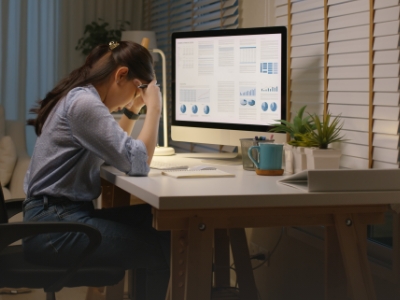Published on 28 September 2021
Amid a pandemic, technology has made it possible to continue to overcome physical distancing and enable remote working. However, it has its downsides.
One of these is a phenomenon we call ‘Zoom fatigue’ – named after the video-call app that has become one of the most popular platforms to host video conferencing.
According to Ms Terri Chen, Head of Psychology and Principal Clinical Psychologist, Psychological Medicine, National University Hospital (NUH), this is largely due to a concept called synchrony, which facilitates communication. “We use a range of precisely timed verbal and non-verbal cues to communicate, and we rely on the precise responses from others to decide if we are being understood.”
If there is a delay – even of a few milliseconds, subconsciously, the brain will register the anomaly and work harder to try overcome it and restore synchrony.
The nature of Zoom meetings disrupts synchrony. It also impairs our natural ability to pick up subtle non-verbal communication cues that we rely on to fully understand what is being communicated. This means we can’t tell if people understand us, are paying attention or wish to interject. “This uncertainty,” said Ms Chen, “gives rise to more anxiety.” Having many people on screen magnifies the strain, as the brain works harder to process and decode an excess of information.
Having to maintain constant eye contact on the camera – the only way we can show that we’re paying attention – is also mentally draining. A common bad habit of multitasking – by using the chat function or replying to emails – while on a video call adds to the mental load.
As working from home or home-based learning continues to some extent, ‘Zoom fatigue’ may accumulate.
However, you can try these tips to reduce the strain:
Build in time between video calls and take a break from the screen. Take a walk, do deep breathing exercises or stretch to refresh yourself mentally.
Where possible, minimise distraction and reduce visual cues and stimuli. Encourage meeting mates to use a plain background, or agree that participants who are not speaking turn off their video.
Consider switching to phone calls or emails.
Build a routine and space that separates working hours from your personal time.
In consultation with Ms Terri Chen, Head of Psychology and Principal Clinical Psychologist, Psychological Medicine, NUH.




